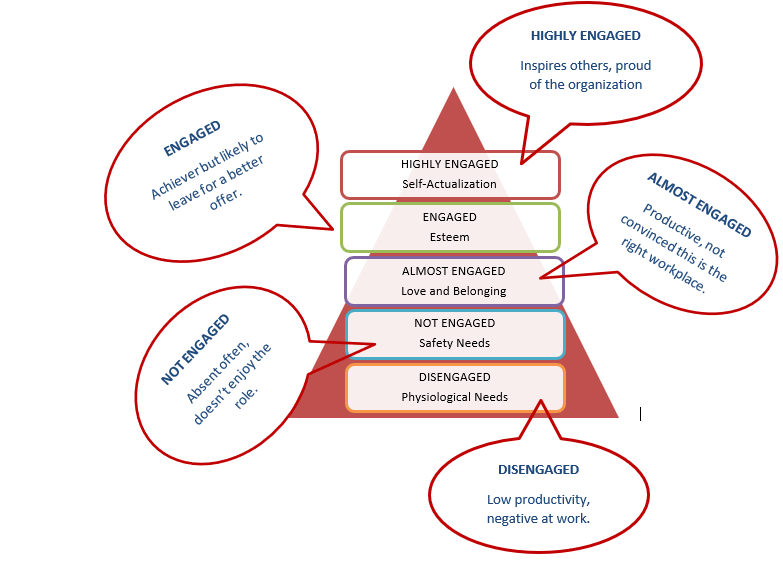How Do You Build Engagement When Hugs and Handshakes are Taboo?
A recent NY Times article suggests more employees are quitting their jobs because they were not emotionally attached to their team.
“Many of those workers who never got the chance to meet colleagues face to face before moving on said they had felt detached and questioned the purpose of their jobs.”
The sad reality is that it is much easier to leave a team who you have never met in person. In these past 19 months, new recruits have never sat in the same room as their colleagues, never shook their colleague’s hands and have had minimal opportunity to form friendships. It is not surprising that folks are feeling disconnected to their teams. The question is how do we change this when we are not meeting in person, cautious of physical distancing and hugs and handshakes are taboo?
Here is what we do know. Employees who feel connected to their manager, team and organization are those employees who are more likely to stay with the organization and contribute more. Understanding intrinsic motivations, values, beliefs, and the fundamental needs of people takes time. This is where we can learn from Maslow’s Hierarchy of Needs.
Let’s take a closer look at how we can leverage Maslow’s Hierarchy of Needs to drive employee engagement and reduce the high turn over we are currently seeing with remote workers.
Maslow used the terms like "physiological", "safety", "belonging and love", "social needs" or "esteem", and "self-actualization" to describe the pattern through which human motivations generally move.
Physiological needs:
While an employee’s physiological needs may be met at work through a regular paycheck that provides food and shelter, it does not mean that they are engaged at work. Those at this level are there for the paycheck and the paycheck only. They are also the most toxic for the workplace as they tend to be quite negative and not overly productive.
Safety needs:
A workplace where individuals can bring their whole self are those who feel safe. At this level, employees can share their beliefs and values. They also feel physically safe at the workplace. While these employees are safe, they are not engaged, and this is in large part to not feeling connected to their manager, team or organization. In this case, there could be a misalignment of values or beliefs.
Love and Belonging needs:
There is where employees are quite productive and they have formed friendships, connections and appreciate those they work with. They are not quite fully engaged as they are curious to know what other career opportunities are available outside the organization. This could be related to total compensation or career opportunities. While physiological needs are met and they feel safe at work, they could be in search of something more that the organization may not be able to offer.
Esteem needs:
At this level an employee needs both strong self-esteem which is driven from independence and personal achievement, but it also comes from the positive boost of energy that comes from being acknowledged by others in the organization. At this level the employee feels respected at work for their accomplishments. A passive job seeker would fall into this hierarchical level.
Self-Actualization:
At the peak of this pyramid is where employees feel confident in their skills and abilities and their team and organization respect their contributions. They feel a true sense of fulfillment and are highly committed and loyal to the organization. These are the employees who inspire others to do great work.
ACTIONS LEADERS CAN TAKE
While we strive to create workplace cultures where everyone’s needs are being met, the reality is that there will be a mix of highly reneged to disengaged employees. Shifting the disengaged employees to fully engaged is no easy task and while termination may seem like the most efficient way, there are other alternatives to consider.
Provide a Psychologically Safe Environment. Positive leader role modelling is important. No one is expecting perfection and a humble leader who makes mistakes and admits it, are those that people want to follow.
Question with Curiosity. Hold formal town halls, online surveys and schedule one on one calls with each team member. Look at multiple factors like, total compensation, workplace wellness, career development opportunities.
Seek to Understand. We need to understand beliefs, values and internal and external motivations. Maybe the issue isn’t with the disengaged employee but there is a misalignment of values with their manager? Or maybe the issue is with the disengaged employee, and it is time to part ways. Seek to understand the root of the problem.
Leverage the Highly Engaged. What makes your highly engaged workforce highly engaged? These are the employees we want to clone but why are they inspired to do more for the company, their team, and their manager?
SUMMARY
The challenge for employers, especially those who have decided to stay virtual is to find ways to connect with their remote workforce. While there is no quick fix to making meaningful connections with colleagues, be purposeful with how you are connecting with your team. Be open and curious. Overtime, you will come to know those on your team, beyond their job title and beyond the projects they have completed. They will begin to understand that you not only care about their basic needs but that you want them to contribute in a way that is meaningful to them. This creates a highly engaged workforce and one that contributes to loyal employees who are committed for the long-term.
With time, we can only hope that we will return to a place where hugs and handshakes are no longer taboo…

